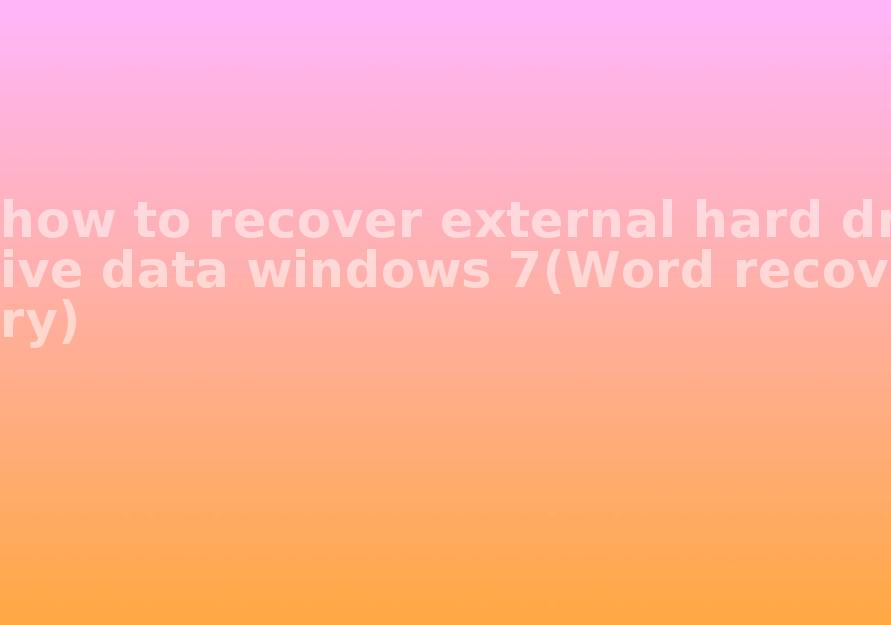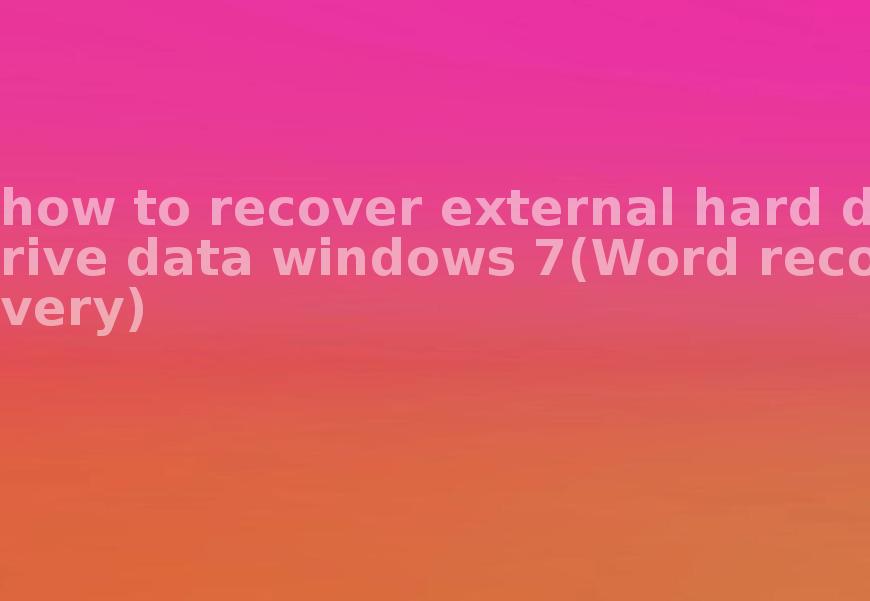how to recover external hard drive data windows 7(Word recovery)
2023-10-20 08:00 265
Part I. Overview of the context in which the document was recovered:
Recovering data from an external hard drive on a Windows 7 system can be crucial in cases of accidental deletion, formatting, or corruption. External hard drives are commonly used to store important documents, including Word files, making their recovery an essential task. The process involves accessing and salvaging the data from the external hard drive using specialized recovery software. Here are a few examples of scenarios where this kind of recovery may be necessary:
1. Accidental deletion: You might have unintentionally deleted an important Word document from your external hard drive. This could happen if you mistakenly selected the wrong file or folder and pressed the delete button.
2. Formatting: Formatting an external hard drive erases all the data stored on it. If you accidentally formatted your external hard drive containing valuable Word files, recovery becomes necessary to retrieve the lost data.
3. Corruption or system failure: External hard drives can sometimes become corrupted due to physical damage, file system errors, or sudden power loss. In such cases, the Word documents stored on the drive may become inaccessible, requiring data recovery to get them back.
Part II. Causes of data loss from an external hard drive:

1. Human error: Accidental deletion or formatting of files and folders on the external hard drive.
2. Virus or malware infection: Malicious software can corrupt or delete files, rendering them inaccessible.
3. Power failure: Sudden power outages or improper ejection of the external hard drive can lead to file system corruption and data loss.
Part III. Steps to recover Word files from an external hard drive on Windows 7:
1. Stop using the external hard drive: To prevent further data loss, immediately disconnect and stop using the external hard drive once you realize your files are missing or corrupted.
2. Install a data recovery software: Download and install a reliable data recovery software that specializes in retrieving lost or deleted files from external hard drives.
3. Connect the external hard drive: Connect the external hard drive to your Windows 7 system and ensure it is recognized by the operating system.
4. Run the data recovery software: Launch the recovery software and select the external hard drive as the target device to scan for recoverable files.
5. Scan and recover: Allow the software to scan the external hard drive for lost or deleted Word files. Once the scan is complete, you should be able to preview and select the files you want to recover.
6. Save recovered files: Choose a safe location on your Windows 7 system and save the recovered Word files to avoid overwriting or further data loss.
Part IV. Types of other files that can be recovered:
Apart from Word documents, data recovery software can retrieve various other file types from an external hard drive on a Windows 7 system. Some examples include:
1. Excel spreadsheets (.xlsx) 2. PowerPoint presentations (.pptx) 3. PDF documents 4. Images and photos (JPEG, PNG, etc.) 5. Videos (MP4, AVI, etc.) 6. Audio files (MP3, WAV, etc.) 7. Archives (ZIP, RAR, etc.)

Part V. Frequently Asked Questions (FAQ):
1. Can I recover files from an external hard drive that has been physically damaged? Yes, data recovery software can often recover files from physically damaged external hard drives. However, if the drive is severely damaged, you may need to consult a professional data recovery service.
2. How long does the data recovery process take? The duration of the data recovery process depends on factors like the size and health of the external hard drive, the number of files to be recovered, and the speed of your computer. Larger drives with extensive data may take several hours to complete the recovery process.
3. Can I recover files if my external hard drive is not recognized by Windows 7? If your external hard drive is not recognized by the operating system, it may indicate a problem with the drive itself or the connection. In such cases, you can try connecting the drive to another computer or seeking professional assistance for data recovery.









